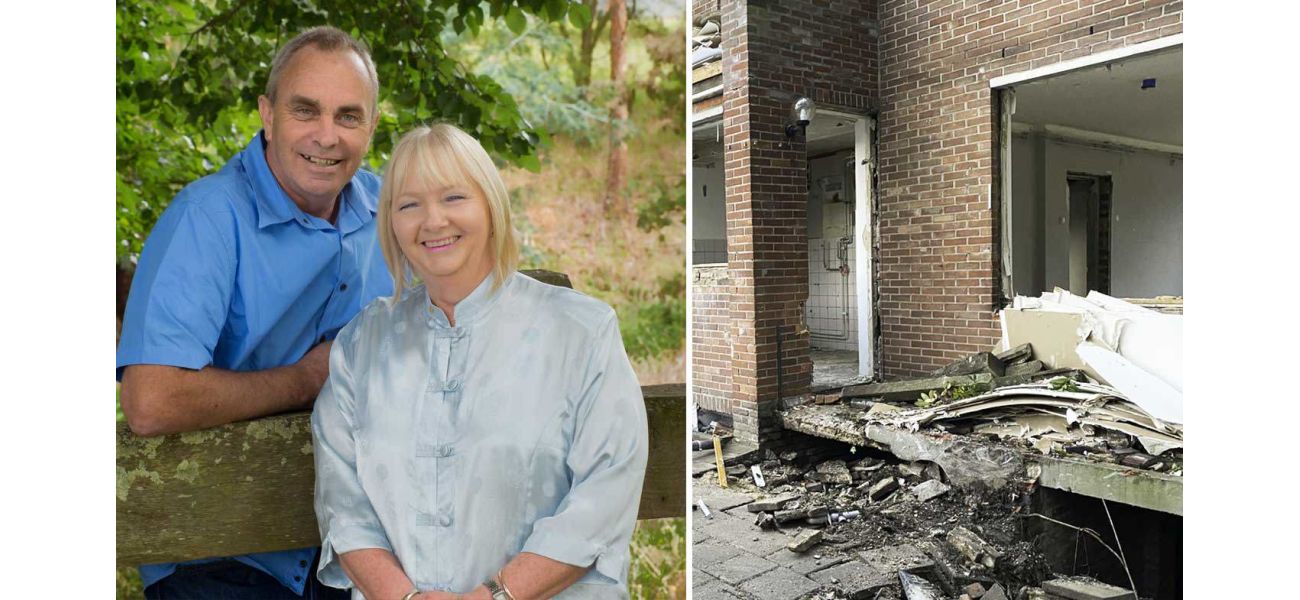The asbestos in our homes is increasing in its risk level.
A Victorian mechanic, Graeme Hamilton, regrets his home renovation from 40 years ago.
November 24th 2024.

Graeme Hamilton, a car mechanic from Victoria, still feels troubled by a renovation project he completed on his house almost 40 years ago. It was the 1980s and he and his wife Vicki had recently purchased their home in Gippsland, where they still reside today.
Hamilton recalls the process of tearing out the bathroom, which involved removing a cement sheet that was later found to contain asbestos. He and his wife worked together on the renovation, with their young daughter often curiously asking her father what he was doing. Little did they know, they were exposing themselves and their family to a dangerous mineral responsible for the deaths of approximately 4,000 Australians each year.
Australia's use of asbestos was particularly prevalent in the 20th century, surpassing that of most other countries. From 1930 to 1983, the country imported 1.5 million tonnes of asbestos. Shockingly, one third of homes built or renovated between 1945 and 1990 still contain asbestos.
It wasn't until the dangers of asbestos became widely known that Australia began to decrease its importation, ultimately banning it completely in 2003. However, for Hamilton, it was too late. As a young apprentice mechanic in the 1980s, he was exposed to asbestos on a daily basis through his work. The brake pads, clutches, head gaskets, and exhaust gaskets he worked with all contained asbestos, causing him to inhale harmful dust.
Last year, Hamilton's lung problems began and he is now under the care of a thoracic surgeon. He has developed pleural plaques, a condition in which scar tissue forms and thickens due to asbestos fibers becoming lodged in the respiratory tract's membranes. Having seen many friends and family members fall victim to asbestos-related illnesses, such as asbestosis, lung cancer, and mesothelioma, Hamilton is understandably worried about his own health and that of his loved ones.
To raise awareness, Hamilton is sharing his story during Asbestos Awareness Week, which began today. Experts are also warning home renovators about the increasing hazards of aging and deteriorating asbestos. With most asbestos in Australian homes now between 30 and 100 years old, the likelihood of it breaking down and releasing harmful fibers is higher than ever.
Jodie Deakes, CEO of the Asbestos and Silica Safety and Eradication Agency, urges homeowners to have their homes tested for asbestos before starting any renovation or DIY project. Asbestos can be found in over 3,000 building products and may be present inside and outside of homes, in floors, walls, ceilings, eaves, pipes, and roofs. Deakes particularly emphasizes the danger of asbestos cement roofs, which have been exposed to years of harsh weather conditions and can release fibers when disturbed.
For Hamilton and his wife, who are still renovating their home after all these years, knowing which parts contain asbestos is crucial. They make sure to hire a professional asbestos removalist to safely remove any asbestos-containing materials. Hamilton also advocates for mandatory asbestos reports to be included in house sales to protect future homeowners from unknowingly exposing themselves to the harmful mineral.
In conclusion, Hamilton's story serves as a reminder of the ongoing dangers of asbestos in Australia and the importance of being aware and taking necessary precautions when renovating or working with older homes. By educating ourselves and taking proper safety measures, we can protect ourselves and our loved ones from the devastating effects of asbestos exposure.
Hamilton recalls the process of tearing out the bathroom, which involved removing a cement sheet that was later found to contain asbestos. He and his wife worked together on the renovation, with their young daughter often curiously asking her father what he was doing. Little did they know, they were exposing themselves and their family to a dangerous mineral responsible for the deaths of approximately 4,000 Australians each year.
Australia's use of asbestos was particularly prevalent in the 20th century, surpassing that of most other countries. From 1930 to 1983, the country imported 1.5 million tonnes of asbestos. Shockingly, one third of homes built or renovated between 1945 and 1990 still contain asbestos.
It wasn't until the dangers of asbestos became widely known that Australia began to decrease its importation, ultimately banning it completely in 2003. However, for Hamilton, it was too late. As a young apprentice mechanic in the 1980s, he was exposed to asbestos on a daily basis through his work. The brake pads, clutches, head gaskets, and exhaust gaskets he worked with all contained asbestos, causing him to inhale harmful dust.
Last year, Hamilton's lung problems began and he is now under the care of a thoracic surgeon. He has developed pleural plaques, a condition in which scar tissue forms and thickens due to asbestos fibers becoming lodged in the respiratory tract's membranes. Having seen many friends and family members fall victim to asbestos-related illnesses, such as asbestosis, lung cancer, and mesothelioma, Hamilton is understandably worried about his own health and that of his loved ones.
To raise awareness, Hamilton is sharing his story during Asbestos Awareness Week, which began today. Experts are also warning home renovators about the increasing hazards of aging and deteriorating asbestos. With most asbestos in Australian homes now between 30 and 100 years old, the likelihood of it breaking down and releasing harmful fibers is higher than ever.
Jodie Deakes, CEO of the Asbestos and Silica Safety and Eradication Agency, urges homeowners to have their homes tested for asbestos before starting any renovation or DIY project. Asbestos can be found in over 3,000 building products and may be present inside and outside of homes, in floors, walls, ceilings, eaves, pipes, and roofs. Deakes particularly emphasizes the danger of asbestos cement roofs, which have been exposed to years of harsh weather conditions and can release fibers when disturbed.
For Hamilton and his wife, who are still renovating their home after all these years, knowing which parts contain asbestos is crucial. They make sure to hire a professional asbestos removalist to safely remove any asbestos-containing materials. Hamilton also advocates for mandatory asbestos reports to be included in house sales to protect future homeowners from unknowingly exposing themselves to the harmful mineral.
In conclusion, Hamilton's story serves as a reminder of the ongoing dangers of asbestos in Australia and the importance of being aware and taking necessary precautions when renovating or working with older homes. By educating ourselves and taking proper safety measures, we can protect ourselves and our loved ones from the devastating effects of asbestos exposure.
[This article has been trending online recently and has been generated with AI. Your feed is customized.]
[Generative AI is experimental.]
0
0
Submit Comment





